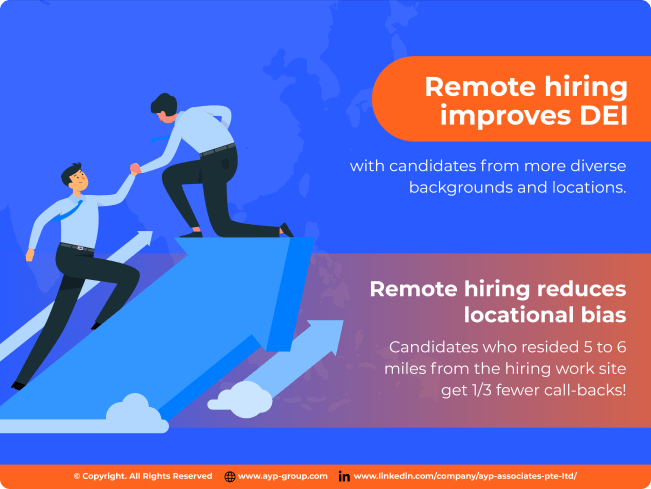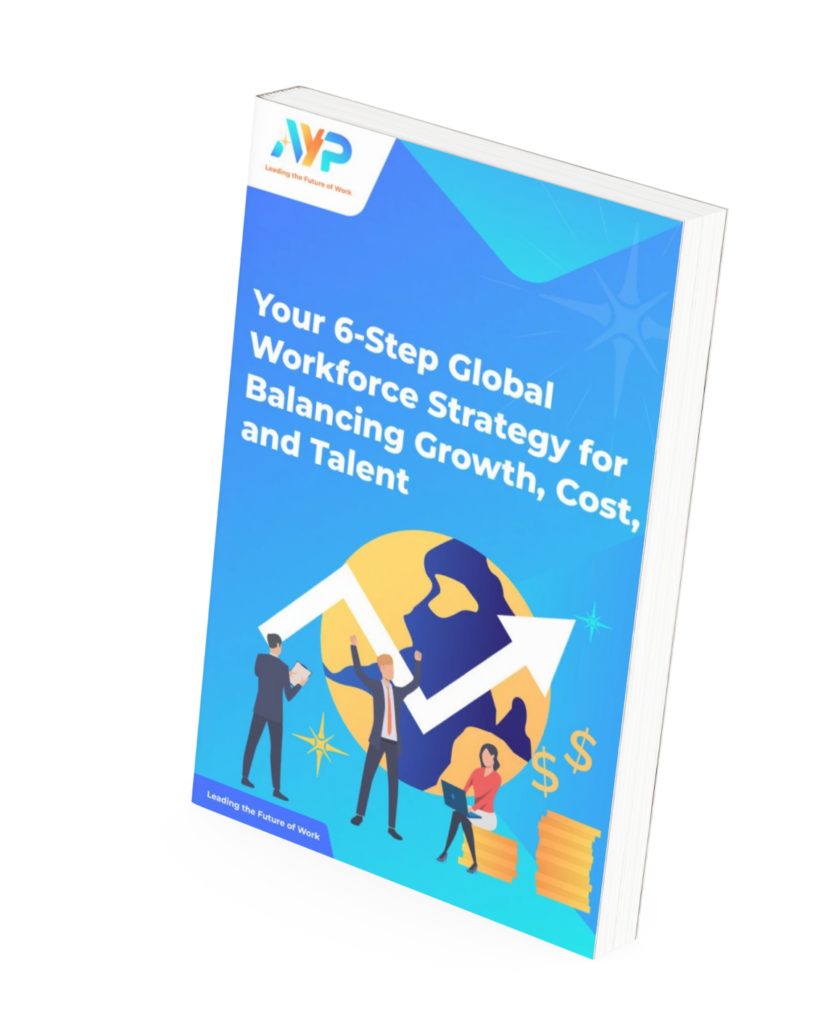We have covered the 2023 global hiring trends in Asia to understand which jobs will be in demand and which have shaped the future trends in Asia.
Even though we are almost walking toward the end of the tunnel and seeing the future lights for hope, it goes without saying that we have experienced several unexpected changes in the workforce.
From 2020 to 2023, the emphasis on talent acquisition and recruitment strategies changed. This article will discuss some significant changes in HR roles, the sustainable way of engaging candidates, tools and methods for successful hiring, and some studies on the preferences of Gen Z that are entering the workforce.
1. Virtual Hiring
One of the most notable changes in the hiring method is continuing to carry out virtual hiring.
The yearly revenue of Zoom was 0.62 billion in 2019 and had increased significantly to 4.09 billion in 2021.
Here are some of the summaries that illustrate the continuous demand for using the zoom platform and how virtual meetings will remain a significant trend as of 2022:
- Revenue will continue to grow steadily to 37 billion in 2023
- Attracted 209,300 Enterprise customers, an increase of 14% compared to 2021.
- Daily 300 million meeting participants on average.
- 3 trillion meeting minutes in a year.
- Zoom daily meeting participants had increased by 1,900% between 2019 and 2020.
Virtual hiring makes it easier for top talents who require multiple decision makers to participate and join the zoom session together, allowing an efficient collaborative hiring process.
Virtual hiring also creates opportunities for strategic partners like recruitment firms to be more involved in the initial first round of interview assessments before the candidate proceeds to the next in-person interview.
2. Hiring through Artificial Intelligence
Research has shown that artificial intelligence and E-recruitment can significantly reduce talent shortages in labor intensive industries such as the hospitality industry.
Due to business downsizing and closures, the hotel and food industry in the United States experienced a turnover rate of over 70% over the past two years.
The high turnover rate has increased the new talent acquisition cost extensively; according to business estimates, losing one entry-level employee may cost the organization more than $30,000 (2).
According to the National Aeronautics and Space Administration (NASA), AI-enhanced HR processes allowed the HR department to carry out 86% of HR tasks without involving human involvement.

3. Data Analytics and E-recruitment
The benefits of adopting E-recruitment and AI for an HR department that requires hiring multiple talents in a short period include:
- Broadening the applicant pool:
When Kia Motors, a business that employs artificial intelligence, opened a new plant in Georgia, they received 43,000 applications within 30 days to cover 2,500 talent shortages.
- Reaching passive job applicants:
Companies can search from LinkedIn to source for talents who fit the employment requirements and filter out those with skills gaps.
Approaching passive candidates can be advantageous because they may already have the necessary work experience and are less likely to be job-hoppers.
- Enhance recruitment efficiency and reduce cost:
Recruitment can save hiring cycles by 25% and recruiting expenditures by 95%. The whole process is more efficient because the AI software can ascertain the candidate's employment experience, education, and other job-related details using keyword-based auto-scan.
Ready to lead your HR management with more E-solutions? AYP offers a quick and cost-effective solution with all relevant data on a single dashboard for your company to make better and faster data-driven decisions in real time.
4. Increased Focus on Internal Hiring
HR leaders used to think of the talent journey as a linear lifecycle: recruiting new talents from the outside, onboard, developing them until they leave, and bidding farewell to them.
However, the talent lifecycle now looks more like a circle, and that recruitment door has changed into a revolving door.
Statistics from LinkedIn showed that employees stay 41% longer at companies that hire internally than those that do not.
Internal mobility program serves as a win-win situation for employees who are planning to leave for new career exposure, and assists to reduce the company's recruitment costs.
Another new trend is to rehire back former employees. The best example of a company upholding its word is AirAsia, which promised to rehire everyone who Tony Fernandes, the group CEO, had to let go in 2021.
High-skilled jobs like cabin crew require at least 90 days of training before being on duty. On the other hand, former employees will just need to complete a two-week refresher course before onboarding. (3).
Employer branding is associated with rehiring companies as a human-centric company that expresses gratitude to the former employees that have walked through adversities and built the company during difficult times.
Subscribe For Exclusive Updates!
Become an insider in the fast-paced world of HR. AYP Monthly Digest delivers the latest trends, insights, and expert advice directly to your inbox, making you a VIP in the know

5. Diversity & Inclusion
Another hot topic concerning all HR professionals across the world is diversity and inclusion. Gartner's research found that organizations with DEI initiatives increase by 20% in inclusion, which will further lead to higher job satisfaction and improved work performance.
Employing remote workers is one approach to promote diversity and inclusion, which is a focus for recruiters to source candidates from more diverse backgrounds and locations.
Remote hiring reduces "locational bias"
According to research published in Harvard Business Review, employers are more likely to respond favorably to applicants who live closer to the work location. Candidates who resided 5 to 6 miles from the work site would get almost 1/3 fewer call-backs (4).
If relocation stipends are not offered or when the candidates have family obligations to look into, relocating for a job offer may discourage diversity and inclusion of attracting candidates from diverse backgrounds.

Caution in promotional biases for remote workers
Although remote hiring improves geographic and national diversity equality, 76% of managers believe on-site employees have a higher chance of getting promotions than remote workers (5).
Especially women and workers from low represented groups are more likely to leverage flexible workplace arrangements; proximity bias will become a reason for inequity.
Hybrid companies will need to mitigate bias in performance evaluation to achieve better DEI.
AYP is practising hybrid to an almost complete remote working arrangement.
Check out our HR manager's sharing why he believes in a hybrid work model.
6. Employee Well-being is a key focus
In China, more than 10.76 million graduates are graduating this year, adding further pressure to China’s job market outlook. The younger generation has higher expectations for work flexibility and a job that aligns with their passion. You can use EOR China to hire China talent without a local entity.
Similar to the great resignation in Europe, there is a group of people who had left their job or even decided not to work, known as "lying flat" in China. This term has gone viral and captured numerous headlines.
Adapting to employees' preferences improves retention.
75% of hybrid workers agreed that their expectations for more flexible working arrangements have increased.
Up to 90 million gig employment opportunities are currently available in India, opening the door to the gig economy. This draws attention to fierce competition for full-time on-site work.
According to a study of 3,000 working participants, if a company decides to implement back to the full-site work arrangement, it will be at risk of losing up to 39% of its employees (6).
The advice here is to connect hybrid employees with the organizational culture and values, especially when location is no longer a concern for remote hiring. The turnover rate will decline if new hires form positive impressions with the company.
Stay Updated with Recruitment and hiring Trends with AYP
Interested in getting more tips on the future trend of recruitment? AYP has more to offer an employer of record (EOR):
- Onboard your global team in minutes.
- A single dashboard solution that simplifies your HR processes
- Save up to 60% on hiring costs, compensation, and insurance.
- Improve your DEI score with HR digital strategies.
- AYP's EOR services in APAC: Manages more than 130+ payroll currencies according to the countries' labor law.
Get a FREE customized plan and a free demonstration on how to grow your remote teams and manage your spending more optimally through HR digital solutions.
Do you find the information from this blog engaging and helpful?
Follow us on our LinkedIn page for more upcoming blogs!
Featured Content
1. How to hire remote employees from Southeast Asia


